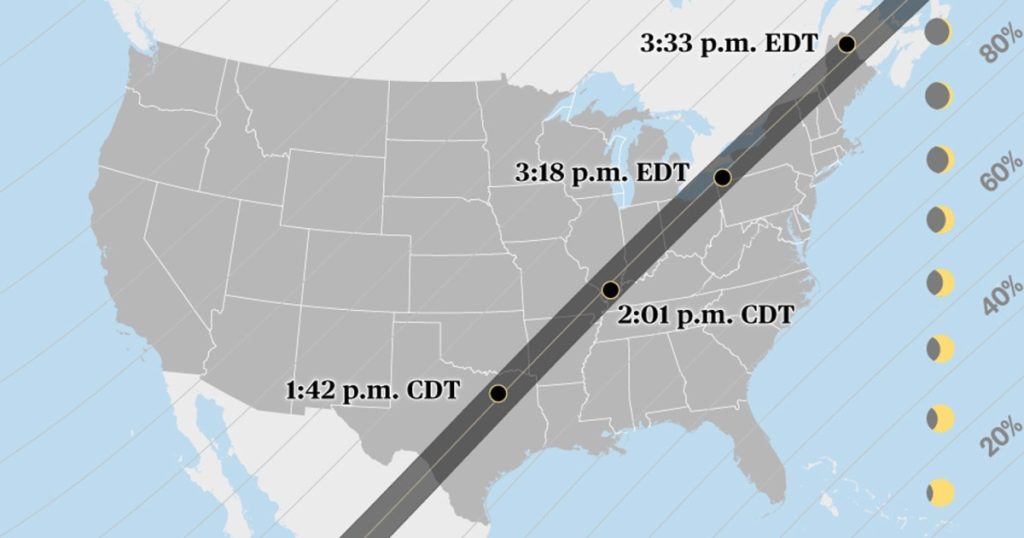A total solar eclipse is expected to occur over North America on Monday, a highly anticipated event for sky-watchers. The eclipse will be visible in Mexico, 15 U.S. states, and eastern Canada along a path of totality that is over 100 miles wide. The moon will pass between the Earth and the sun, blocking the sun’s light and causing the sky to darken for a few minutes. In areas outside the path of totality, a partial solar eclipse will be visible where the moon will appear to take a bite out of the sun.
The total solar eclipse will begin on Mexico’s Pacific coast, moving northeast across Mexico before passing through various U.S. states including Texas, Oklahoma, Arkansas, Missouri, Illinois, Kentucky, Indiana, Ohio, Pennsylvania, New York, Vermont, New Hampshire, Maine, as well as parts of Michigan and Tennessee if conditions are clear. In Canada, the eclipse will be visible in parts of southern Ontario, Quebec, New Brunswick, Prince Edward Island, and Cape Breton. The duration of totality will vary by location, with most places experiencing around 2 minutes of darkness.
The longest stretch of totality during this eclipse is expected to last 4 minutes and 28 seconds in an area northwest of Torreón, Mexico. Different cities along the path of totality will experience the eclipse at different times. For instance, in Dallas, the partial eclipse will begin at 12:23 p.m. CT, with totality beginning at 1:40 p.m. CT. In Little Rock, Arkansas, the partial eclipse will start at 12:33 p.m. CT, with totality at 1:51 p.m. CT. It is important to use special eclipse glasses to safely view the eclipse and avoid permanent eye damage.
Other resources such as NationalEclipse.com and TimeandDate.com can provide information on when the various phases of the eclipse will be visible in a specific location. Remember that it is never safe to directly look at the sun, including through binoculars, telescopes, or camera lenses without the appropriate eye protection. Eclipse glasses are a necessity when viewing solar eclipses to prevent eye damage. The eclipse offers a rare opportunity for millions of people across North America to witness the spectacular event if weather conditions permit.
The eclipse serves as a reminder of the beauty and wonder of the natural world, bringing together people from various locations to experience the celestial display. Whether viewing the totality or the partial eclipse, each stage of the event offers a unique and awe-inspiring moment to witness the moon crossing in front of the sun. By taking precautions and using proper safety measures, individuals can safely enjoy and appreciate the celestial phenomena of a solar eclipse, making memories that will last a lifetime. The total solar eclipse is an extraordinary event that captures the imagination and curiosity of people of all ages, uniting them in a common awe of the universe’s wonders.
















